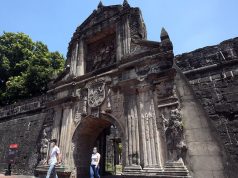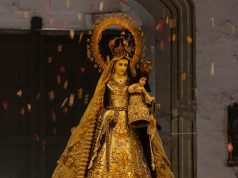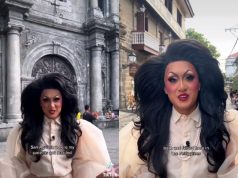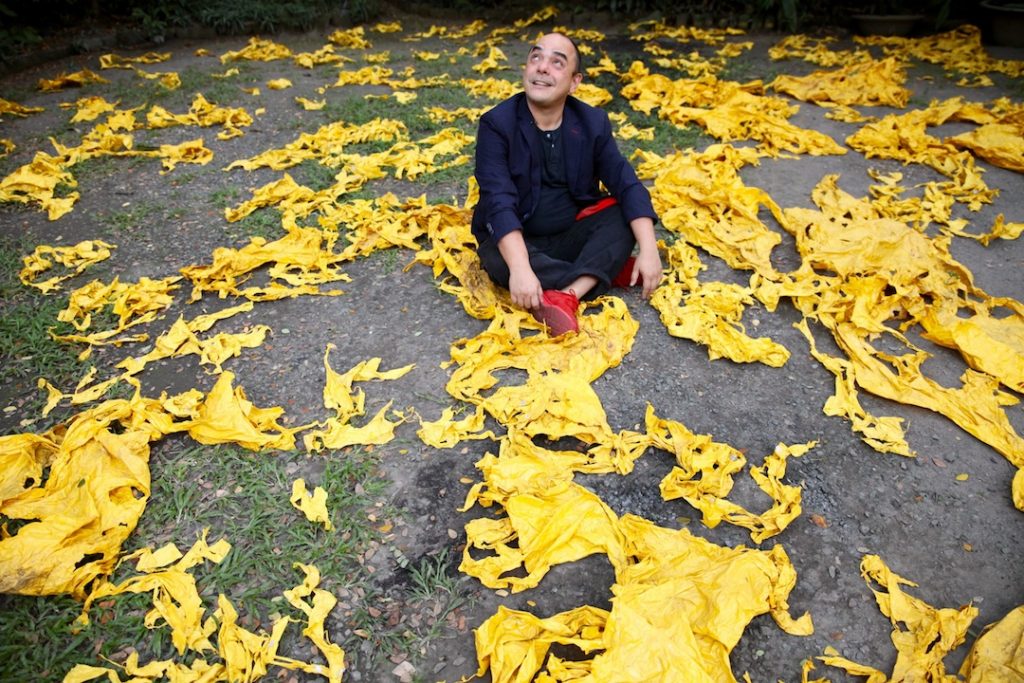
Tour guide, performing artist, and art and culture provocateur Carlos Celdran is finally making his grand creative vision come to life this Saturday, February 3, amid the sprawling Intramuros grounds. Manila Biennale: Open City 2018, was a compelling concept when Celdran presented the project November last year before a group of journalists, bloggers, and a handful of participating artists.
“Manila is a dead city and it’s not going to be saved by the church but by the arts,” Celdran pointed out in his presentation as he proceeded to share his exciting vision.
Now, four months later, it’s alive. And if there’s any one big art event you’d have to attend, this would be it. For curiosity, for Philippine art’s sake, for pride in the country and its brave people, or all of the above.
Historical battle
Exhibitions in various parts of the Walled City, lectures, film screenings, talks and workshops, retail areas, food, and a costume ball will all be at the month-long event (February 3 till March 5, 2018). Vernissage is on Friday, February 2.
But before you think Manila Biennale is one big social happening, the idea behind the gathering is really culled from the theme “Open City,” a reference to when Manila was totally devastated after a month-long battle fought by American troops and Filipino soldiers against the Japanese forces.
More than 100,000 civilians died from the battle; the cosmopolitan city became a wasteland as buildings and homes were ravaged. Physically, Manila became a desolate place but it had gained back its freedom from three harsh years of being under the Japanese occupation (1942 to 1945).
This commemoration of such an intense period in Philippine history isn’t the first that Celdran has been putting together.
Past years have had Celdran organizing the Manila Transitio Memorial Concert and Picnic in honor of the Filipino heroes of the Manila Battle. In these events, artists perform or mount installations for the public to appreciate. In one such event this writer has attended, a fitting ending involved the release of a hundred Asian sky lanterns to the polluted Manila sky—a shout out for hope perhaps to the city that’s losing its cultural cojones to photo-bombing buildings, street crimes, and yes, casinos-as-salvation dreams.
Manila Biennale’s fierce fight
This time around, Celdran gears up for a cultural mutiny enlisting mainly independent artists and zero art galleries.
In his press statement, Celdran points out that, after all, “The “Biennale will be about the experience and not the sale of art. The aim of this event is to bring the soul back to Manila through art.”
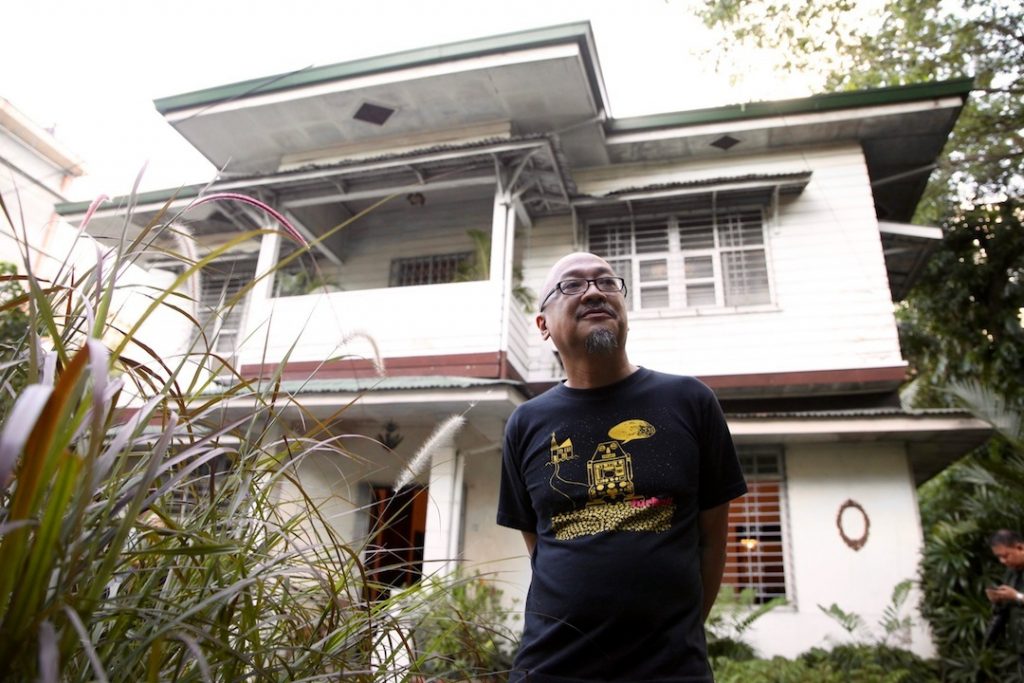
Among the artists to watch at the first ever expo is new media artist Tad Ermitaño, a major figure in his field.
Ermitaño’s sound and digital installations are recognized in South East Asia and Europe. His works explore the shared aesthetics of the aural and the visual through interactive platforms that interestingly merge computer programming with organic objects like coconut worm larvae (kuok) and indigenous musical instruments, to name a few. He participated at the Architecture Biennale 2016 as one of the artists at the Philippine Pavilion’s “Muhon: Traces of an Adolescent City” in Palazzo Mora, Venice in Italy. Ermitaño is a member of Children of Cathode Ray, a trailblazing sound art group founded in the 90s.
Other works by artists to reckon with include installations by Alwin Reamillo, Agnes Arellano, Kawayan de Guia, Gerardo Tan, MM Yu, Lena Cobangbang, Maria Cruz, Mideo Cruz, Elnora Ebillo, Boni Juan, and Carina Evangelista, to name just a few.
On Instagram, @manilabiennale features an installation piece by Australia-based Filipino installation artist Alwin Reamillo who is “interested in the ideas of mobility, memory and exchange.”:
Here’s a peek at Mideo Cruz’s Golgotha Series, which is part of the Manila Biennale exhibition. (Image source: @manilabiennale on Instagram).
The works of the late Roberto Chabet also makes an appearance at the Biennale.
Performing artists are also participating at the month-long expo’s various activities.
Art curators Ringo Bunoan Alice Sarmiento, Con Cabrera, and Cocoy Lumbao have connived with Celdran to complete the Manila Biennale vision. Newly restored San Ignacio Church will be the site of some of the art works.
It takes a village to put together one big show, which is why the biennale has been getting volunteers (students and professionals) alike who will work for art—and, why not, to enjoy access to the shows and events as well.
Some help from sponsors also came in: Bench, the Intramuros Administration, Cultural Center of the Philippines, Tesoro’s, LBC, and PAL, among others.
Passports, day passes
Manila Biennale is all ready to receive visitors. And in case you’re ready for Manila Biennale, passports and day passes are being sold: Php5,300 for the exhibites and experience, including free e-jeepney rides to venues, access to the VIP lounge with free wi-fi and refreshments, and exclusive invitations to curated events and the grand Artist’s Ball. Remember, the passport is valid for the whole one-month run of Manila Biennale.
One-day passes are also available: Php880 for regular visitors and Php550 for students (just show your ID).
Liking what you’re reading so far? Good. Leave your BGC and Makati comfort zones for a few and visit brave new Intramuros for Manila Biennale 2018 this month at least.
More information here: The Manila Biennale 2018 website; Manila Biennale: Open City on Facebook; and Manila Biennale on Instagram.




